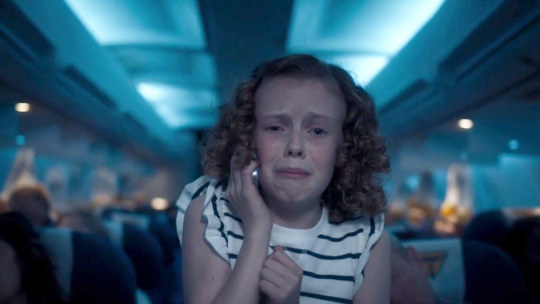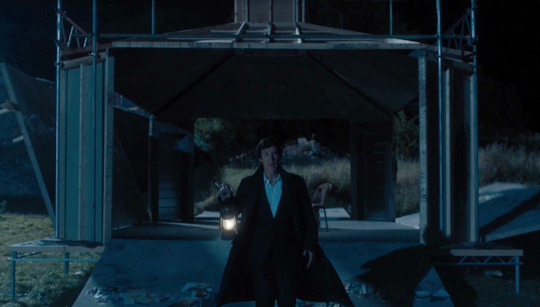#probably due to tfp's production hell
Photo







BBC Sherlock is picking up where Casablanca left off. “The stage is set, the curtain rises, we are ready to begin…” Which is important, because before it was a film, Casablanca was an unproduced play.
First, I’d like to give credit to @deducingbbcsherlock for the original meta about John on the tarmac: ( x ) This post, is a follow-up of sorts, in that it deals with what happens afterward, and how we all land.
Take into account, that when Casablanca was made, the people we now think of as refugees, were still living the events. The film did create a rallying for those same people, and included refugees in its scenes. The LGBTQA+ viewers hoping for representation are the Sherlock refugees.
I included the images above, because of the blue/slightly rainbow lighting effect that occurs in the scenes, and due to pondering why they were having Mycroft watching an old movie (which we know was made for the show). Blue lights invariably spring up around anything involving Sherlock and John’s hearts (especially phones, bombs, and police lights). In the scene from T6T, the blue lights mimic a runway. In the first of the two images from TFP, after Sherlock breaks down the fourth wall, it even looks like he is coming down from a plane ramp.
From a previous piece I worked on:
Lights and Landing. I keep thinking it’s going to /come down/ to lights. On ASiB, Flight 007, the lights were out, and Nobody (TLD/Nemo TFP) was home (because they were all dead). During the stag night, Sherlock and John are drinking by a table, where Sherlock’s (heart) phone is left glowing blue next to four candles. If we’re still on the roof of TRF, John had his lights knocked out, but only after he and Sherlock escaped the police with their blue lights. In TEH, the lights are on the (heart) bomb. In HLV, Sherlock shoots Magnussen, and then a huge light lands on him from the helicopter. In TAB, Sherlock’s lights kept going out. In the flight of T6T, again everyone’s lights are out, except John’s. In TLD, Sherlock figures out the issue of the illuminated Miss Me from Eurus’s note, in the same way he noticed Help Me on the wall when Anderson missed it (which is also the text Sherlock sent Lestrade in TSoT that then results in blue lights through 221B’s curtains). In TFP, the little girl mentions seeing lights right before Sherlock figures out the code to locate John. We already know there is this recurring issue of projectors/projections/premonitions.
Which is why I don’t think it’s an accident that we go from the Casablanca-style scenes in HLV and TAB, to Sherlock and John beating Mary Rosemund to Morocco, in T6T. At the beginning of T6T, Sherlock says, ““I’m the target. Targets wait.” “How did you find me?” Mary asks. “I’m Sherlock Holmes,” he shrugs. He waited. For John. For her. There were premonitions...
Also, it works with the scenario of Victor Lazlo. Early in the movie, Victor Laszlo acquires a large scar over his left eye. The reason for the scar's existence is never addressed in the movie. Likewise, @inevitably-johnlocked surmised that John has lost his left eye ( x ) In TFP, as a child, Eurus always has brown eyes--except in the scene where she is lighting the match. In that scene, it’s blue. I never understood why, until this.
The water scenarios we keep getting in S4, and the idea of TD-12 or a coma causing this to all be misinformation or somehow incorrect.
Captain Renault: What in heaven's name brought you to Casablanca?
Rick: My health. I came to Casablanca for the waters.
Captain Renault: The waters? What waters? We're in the desert.
Rick: I was misinformed.
We’ve already had a parallel between Rick and Sherlock from TGG, albeit in reverse.
Rick: And remember, this gun is pointed right at your heart.
Captain Renault: That is my *least* vulnerable spot.
Then, there’s John as Ilsa. A blonde married to a blonde, pining over a dark-haired man that is represented as anti-social. Renault has the ability to mirror Sherlock or John.
Ilsa: It's about a girl who had just come to Paris from her home in Oslo. At the house of some friends, she met a man about whom she'd heard her whole life. A very great and courageous man. He opened up for her a whole beautiful world full of knowledge and thoughts and ideals. Everything she knew or ever became was because of him. And she looked up to him and worshiped him... with a feeling she supposed was love.
Now, we come to the parallels between the tarmac scene and TFP:
“Another well-known story is that the actors did not know until the last day of shooting how the film was to end. (Delayed Sherlock scripts, and actors saying they didn’t know in advance where their story arcs were going.) In the case of Casablanca, this was later refuted... The original play (set entirely in the cafe) ended with Rick sending Ilsa and Laszlo to the airport. During scriptwriting, the possibility was discussed of Laszlo being killed in Casablanca, allowing Rick and Ilsa to leave together, but as Casey Robinson wrote to Hal Wallis before filming began, the ending of the film "set up for a swell twist when Rick sends her away on the plane with Laszlo. For now, in doing so, he is not just solving a love triangle. He is forcing the girl to live up to the idealism of her nature, forcing her to carry on with the work that in these days is far more important than the love of two little people." (Remember, John is Ilsa) It was certainly impossible for Ilsa to leave Laszlo for Rick, as the production code forbade showing a woman leaving her husband for another man. (Much like the film code prevented TPLOSH from having Holmes and Watson as a gay couple). The concern was not whether Ilsa would leave with Laszlo, but how this result could be engineered. The problem was solved when the Epstein brothers, Julius and Philip, were driving down Sunset Boulevard and stopped for the light at Beverly Glen. At that instant the identical twins turned to each other and simultaneously cried out, "Round up the usual suspects!" (Which is literally what they did in S4, especially TFP. The key players are all rounded up, and we have our twins reference) By the time they had driven past Fairfax and the Cahuenga Pass and through the Warner Brothers studio's portals at Burbank, in the words of Julius Epstein, "the idea for the farewell scene between a tearful Bergman and a suddenly noble Bogart" had been formed and all the problems of the ending had been solved.” (No loose ends...)
That issue of the Prime Minister, that came up in T6T? In the original play (the curtain rises, the scene is set), the correct PM is written: Weygand. In the subtitles for the English DVDs, it says De Gaulle. At the time of the film, he was head of the Free French government in exile, so a letter signed by him would have provided no benefit.
In the scene where Lazlo begins the national anthem, La Marseillaise, these are the lyrics:
Arise, children of the Fatherland! The day of glory has arrived! Against us, tyranny raises its bloody banner. Do you hear, in the countryside, the roar of those ferocious soldiers? They’re coming to your land to cut the throats of your women and children!
To arms, citizens! Form your battalions! Let’s march, let’s march! Let their impure blood water our fields!
John in TFP: Today, we have to be soldiers, Mycroft, soldiers. And that means to hell with what happens to us!
Sherlock: Soldiers.
John: Soldiers.
Going back to the first image, look at the name of the bar. The Attic. Where does Sherlock locate Eurus? In the attic (last image)...
Tellingly, this is what Umberto Eco said of the film (which originally, had a solid opening, but nothing meteoric) "Thus Casablanca is not just one film. It is many films, an anthology. Made haphazardly, it probably made itself, if not actually against the will of its authors and actors, then at least beyond their control. And this is the reason it works, in spite of aesthetic theories and theories of film making. For in it there unfolds with almost telluric force the power of Narrative in its natural state, without Art intervening to discipline it....When all the archetypes burst in shamelessly, we reach Homeric depths. Two clichés make us laugh. A hundred clichés move us. For we sense dimly that the clichés are talking among themselves, and celebrating a reunion. Eco also singled out sacrifice as one of the film's key themes: "the myth of sacrifice runs through the whole film." It was this theme which resonated with a wartime audience that was reassured by the idea that painful sacrifice and going off to war could be romantic gestures done for the greater good. (We’re back the Greek references that permeated S4, the status of Anteros at the beginning of the opening credits to the show, and the overall reception from viewers of TFP.)
Also, remember Mark saying: “I’m a gay man. This is not an issue. But we’ve explicitly said this is not going to happen—there is no game plan—no matter how much we lie about other things, that this show is going to culminate in Martin and Benedict going off into the sunset together.” Well, if John as Ilsa has vacated the premises, and left that part of himself with Mary, it makes sense. Because, at the end of Casablanca, Rick walks off into the fog with Captain(!) Renault.
Regarding the clues we’ve been getting about 6, 40, & 27. In the summer of 1940, the 27-year-old teacher Murray completed the play in six weeks with the collaboration of Joan Alison. It was never shown as such until London in 1991, for 6 weeks.
Tagging @graceebooks @impatient14 and @whimsicalethnographies @may-shepard @jenna221b because they replied to some of the minor bits I added onto existing posts, which then became this...thing. Anyway, thanks for reading.
62 notes
·
View notes